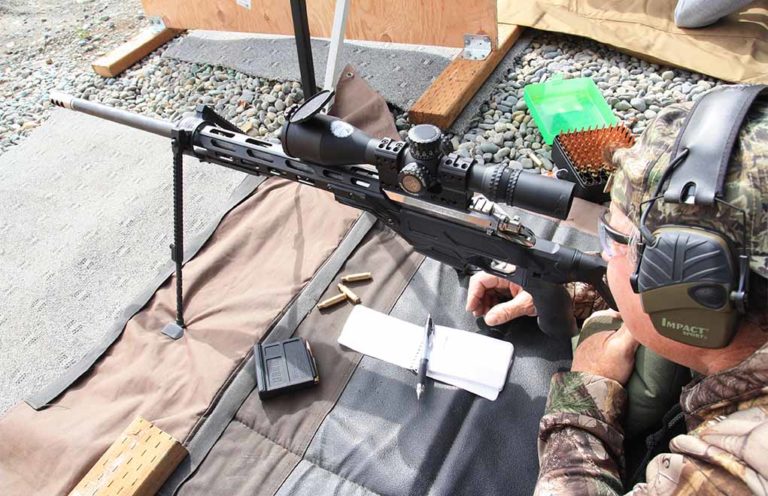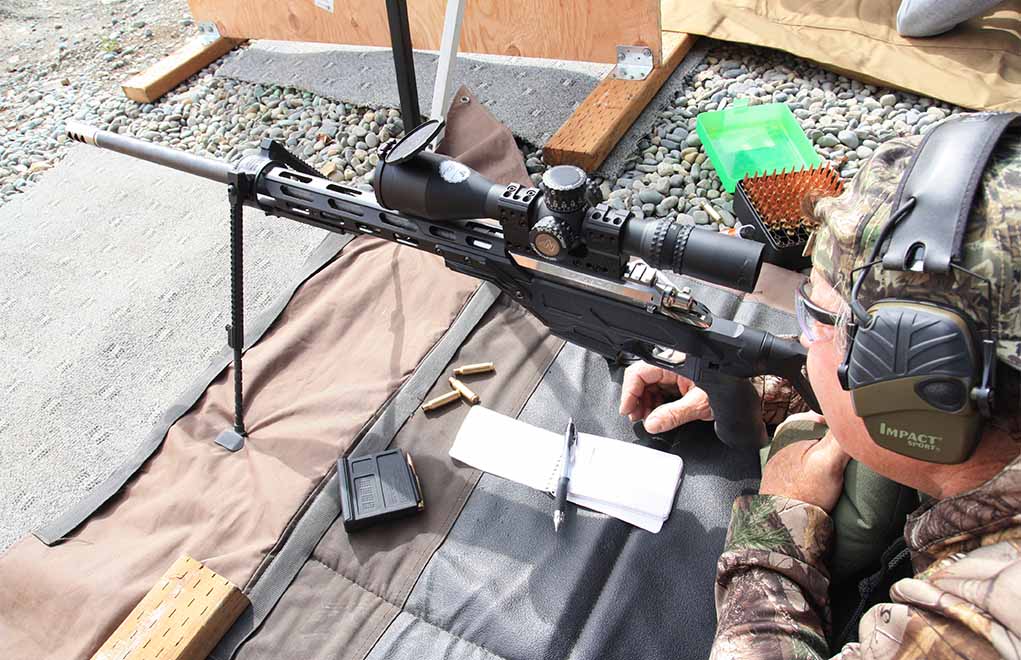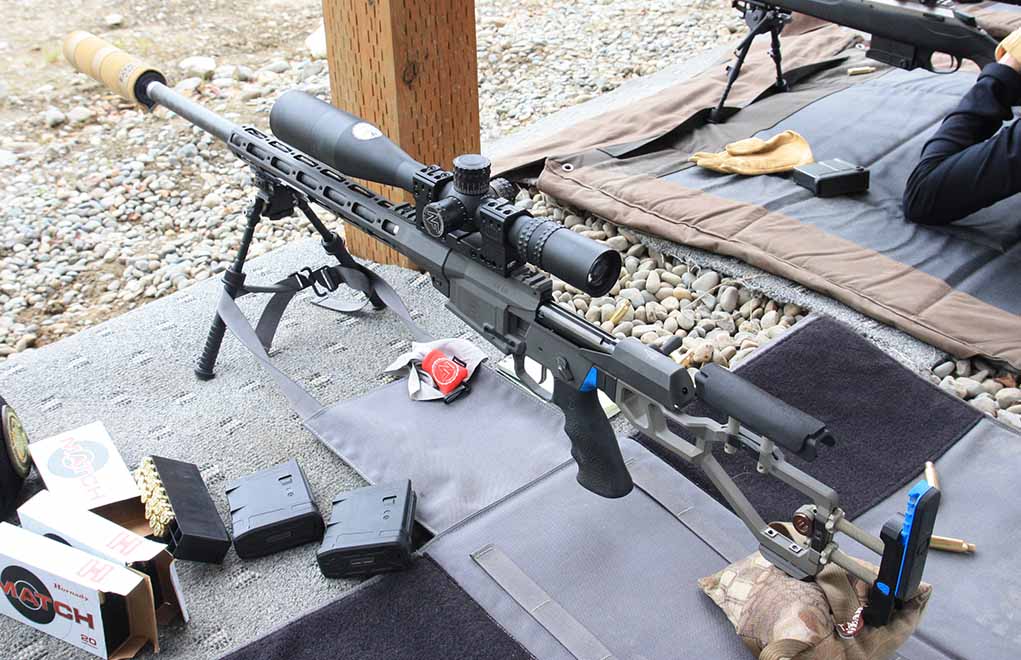

There's more to accuracy than breath and trigger control. Recoil management is as fundamental as any of the other shooting fundamentals.
Why You Need To Become A Master Of Recoil Management:
- Dictates where your barrel is when the bullet leaves the bore.
- Maintains sight picture and reticle's relationship with the target allowing you to spot your shot.
- Ensures consistent muzzle velocity.
- Creates opportunities for quick follow-up shots.
Recoil management tells the bullet where the barrel is when leaving the bore. It controls your zero. Depending on how you are positioned behind the rifle, once it fires, there is time between the primer strike and the exiting of the bullet. During this short period, new shooters tend to move causing deviations in the position of the barrel. More influence at the back of the rifle, increases movement at the front. If we are consistent, as in we shoot a group, it’s our job to adjust the sights to center the group around our aiming point. This recoil management is why your zero is different than your buddy’s; each person is addressing the rifle in a slightly different way; hence the recoil management changes.
Today, the military addresses recoil management as part of the firing task, the same as follow-through. However, recoil management starts during the beginning phases of the shot sequence. We want to load the bipod or stack our weight behind the rifle, eliminating angles during natural point of aim. Then, when the shot breaks, we ride the rifle through recoil, maintaining our sight picture and our reticle’s relationship with the target. This is the part of recoil management that works with follow-through.
Loading The Bipod
Loading the bipod is often misunderstood. People think it’s about pushing the rifle forward with the shoulders. This is incorrect. You are loading the bipod from the core, our hips. It’s not about pressure, but more about deadweight giving the rifle a slab of meat to recoil against. It’s also bipod-dependent, as you are merely taking the slack out of the system.
Get On Target With Frank Galli:
- Mils vs. MOA: Which Is The Best Long-Range Language?
- Buying the Perfect Precision Scope
- Shooting Positions: Variety Is The Spice Of Life
- Riflescope Tracking: Why It’s Crucial To Test It
- Long-Range Shooting: Becoming Your Own Spotter
A Harris bipod, one of the most common on the market, has very little to no perceived movement in the legs. We load a Harris using one technique, where an Atlas Bipod has slack in the legs and movement. That requires are a different technique. The Harris is more of a rise with a knuckle under with the rubber feet. We do not push any bipod forward, but rather bring the rifle back into our shoulder pocket and move our core up. It’s a pinching method of holding the stock between the bipod and body.

The Atlas comes back into our shoulder pocket, then operating as one unit, we remove the slack from the legs using our core weight to hold it. This way, when the rifle recoils, it just flexes on the slack of the legs. About a quarter inch of movement. Once the recoil pulse has ended, the rifle will return to the original starting point.
This works in alternate positions, too, when we are not even using a bipod. Take a barricade drill as an example. How do you position your body and stack your weight behind the rifle? We want our shoulders square and in front of our hips and the rifle held into the shoulder pocket. Picture the prone body position and translate that same upper chest and head location to other positions.
Cornerstone Fundamental
Recoil management is every bit of a fundamental as the fundamentals themselves. We can spot our own shots; we stay engaged with our targets, and can quickly follow up and fix a miss without assistance. Seeing is essential. The more we can see, the more we can locate, close with and engage. It’s about being our own spotter, and not taking our most senior member out of the fight. Two guns are always better than one.
Sniper’s Hide website has a robust online training section in the forum. I have more than 45 minutes of video breaking down recoil management under a variety of conditions. From prone to shooting off a bench, the way you position yourself behind the rifle matters. I have found that you can see as much as a 20fps difference in muzzle velocity by just mismanaging the recoil management. Yes, you read that correctly, your muzzle velocity can and will change based on your position and how you manage the rifle. It’s a critical element and needs to be understood.

Some ranges only let you shoot off a bench, but many of the competitions we participate in are either prone or a variety of alternate positions. When putting new shooters on a bench, we turn them around and square them up. The benches that force you to sit sideways and bladed are a no-go for us right from the start. Turn that bench around and sit squarely. Being up tall and bladed will push you off balance and bleed velocity off compared to the prone position.
It’s important to understand the type of shooting you are engaged in, the discipline. Each discipline has its little variations. I would not preach recoil management to the benchrest crowd, but that is not my discipline of choice.
Parting Shot
The best advice I can give the new shooter reading this is to relax behind the rifle. You need to be a slab of dead meat and not to push or to hold tension in your shoulders. We used to read about guys trying to practice recoil management based on the written word. Many will complain about the bipods rolling or creeping forward. That tells me you are using your shoulders and not your core weight. It’s about sliding that beltline forward about a half-inch. Next, make sure you are not unloading the bipod by reversing the order. Guys will move forward first and pull back into the shoulder pocket second. This unloads the bipod.
Editor's Note: This article is an excerpt of Precision Rifle Marksmanship: The Fundamentals – A Marine Sniper’s Guide to Long Range Shooting.

Next Step: Get your FREE Printable Target Pack
Enhance your shooting precision with our 62 MOA Targets, perfect for rifles and handguns. Crafted in collaboration with Storm Tactical for accuracy and versatility.
Subscribe to the Gun Digest email newsletter and get your downloadable target pack sent straight to your inbox. Stay updated with the latest firearms info in the industry.

![Best Concealed Carry Guns In 2025 [Field Tested] Wilson Combat EDC X9S 1](https://gundigest.com/wp-content/uploads/Wilson-Combat-EDC-X9S-1-324x160.jpg)


![Best 9mm Carbine: Affordable PCCs [Tested] Ruger Carbine Shooting](https://gundigest.com/wp-content/uploads/Ruger-Carbine-Shooting-100x70.jpg)
![Best AR-15: Top Options Available Today [Field Tested] Harrington and Richardson PSA XM177E2 feature](https://gundigest.com/wp-content/uploads/Harrington-and-Richardson-PSA-XM177E2-feature-100x70.jpg)
